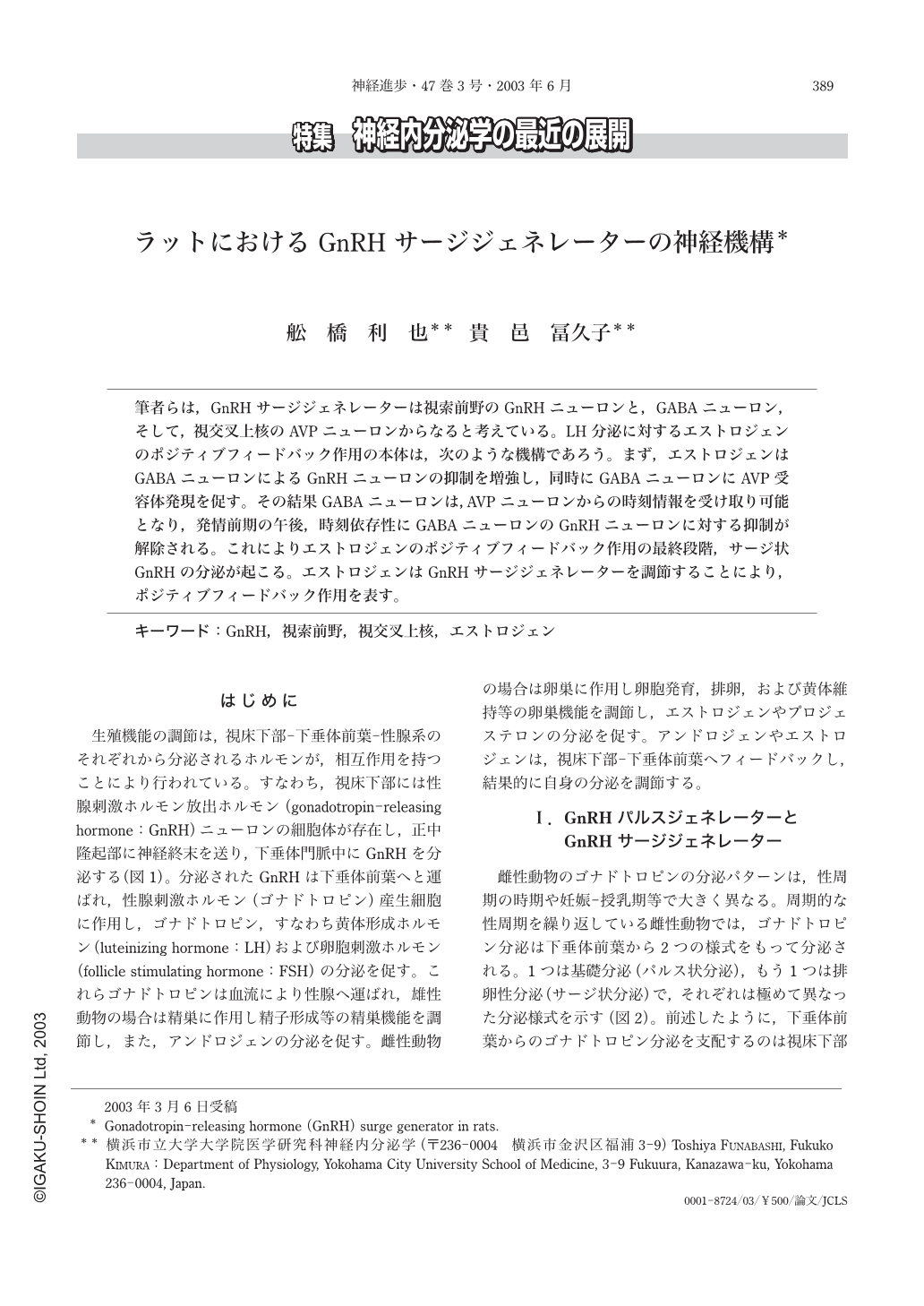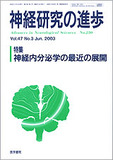Japanese
English
- 有料閲覧
- Abstract 文献概要
- 1ページ目 Look Inside
- サイト内被引用 Cited by
筆者らは,GnRHサージジェネレーターは視索前野のGnRHニューロンと,GABAニューロン,そして,視交叉上核のAVPニューロンからなると考えている。LH分泌に対するエストロジェンのポジティブフィードバック作用の本体は,次のような機構であろう。まず,エストロジェンはGABAニューロンによるGnRHニューロンの抑制を増強し,同時にGABAニューロンにAVP受容体発現を促す。その結果GABAニューロンは,AVPニューロンからの時刻情報を受け取り可能となり,発情前期の午後,時刻依存性にGABAニューロンのGnRHニューロンに対する抑制が解除される。これによりエストロジェンのポジティブフィードバック作用の最終段階,サージ状GnRHの分泌が起こる。エストロジェンはGnRHサージジェネレーターを調節することにより,ポジティブフィードバック作用を表す。
はじめに
生殖機能の調節は,視床下部-下垂体前葉-性腺系のそれぞれから分泌されるホルモンが,相互作用を持つことにより行われている。すなわち,視床下部には性腺刺激ホルモン放出ホルモン(gonadotropin-releasing hormone:GnRH)ニューロンの細胞体が存在し,正中隆起部に神経終末を送り,下垂体門脈中にGnRHを分泌する(図1)。分泌されたGnRHは下垂体前葉へと運ばれ,性腺刺激ホルモン(ゴナドトロピン)産生細胞に作用し,ゴナドトロピン,すなわち黄体形成ホルモン(luteinizing hormone:LH)および卵胞刺激ホルモン(follicle stimulating hormone:FSH)の分泌を促す。これらゴナドトロピンは血流により性腺へ運ばれ,雄性動物の場合は精巣に作用し精子形成等の精巣機能を調節し,また,アンドロジェンの分泌を促す。雌性動物の場合は卵巣に作用し卵胞発育,排卵,および黄体維持等の卵巣機能を調節し,エストロジェンやプロジェステロンの分泌を促す。アンドロジェンやエストロジェンは,視床下部-下垂体前葉へフィードバックし,結果的に自身の分泌を調節する。
It is widely accepted that the surge of luteinizing hormone(LH)secretion occurs as the result of a positive feedback action of estrogen, which is applied with certain strength and duration to the hypothalamus and the pituitary gland. We suggest for the essence of the positive feedback action that estrogen exerts inhibitory effects on GnRH neurons via the action on GABA neurons, but this inhibition is cancelled by some mechanism prior to the time of LH surge in rats. It is also known that the circadian clock located in the suprachiasmatic nucleus(SCN)controls the timing of LH surge. We found that the release of GnRH in co-cultures of the POA with the SCN exhibited a significant circadian rhythm in the presence of estrogen but did not in the absence of estrogen. In these co-cultures, the period of the GnRH circadian rhythm was the same as that of the arginine-vasopressin(AVP)circadian rhythm and was different from the vasoactive intestinal polypeptide(VIP)circadian rhythm. The result suggests that, in co-cultures of the POA and the SCN, AVP neurons drive the circadian release of GnRH in the presence of estrogen. In summary, in rats, GnRH neurons located in the POA constitute the GnRH surge generator in association with GABA neurons in the POA and AVP neurons in the SCN.

Copyright © 2003, Igaku-Shoin Ltd. All rights reserved.


